Botanical Name: Achillea filipendulina ‘Gold Plate’
Common Name: golden European yarrow, fernleaf yarrow
Family: Asteraceae
Distribution/Origin: Europe
Leaf: silvery green, deeply dissected, 1-2 pinnatifid, hairy, fern like, divided into as many as 15 pairs of linear-lanceolate toothed segments
Bud: basal
Flower: tiny, long lasting, bright yellow, dense flattened plates of compound corymbs, blooms June-September
Fruit/Seed: Cypsela (achene + calyx)
Stem/Bark: erect green stems, fibrous roots
Size: 4-5’ height, 2-3’ spread
Habit: upright
Form: clumping
Soil conditions: lean organic soils, sandy loams, well drained
Moisture: dry to medium
Sun: full sun
Exposure: tolerant of hot and humid summers with some drought
Landscape use: specimen, group or mass planting, borders, cottages, containers, lawn replacement
Notes: divide clumps when they become too overcrowded, tallest of yarrows
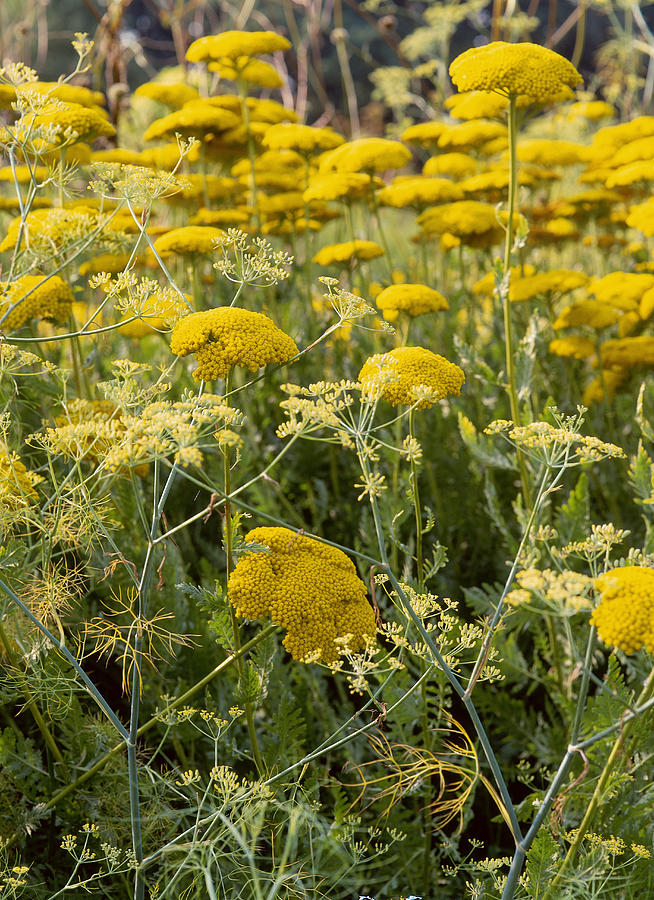

Botanical Name: Ajuga reptans
Common Name: bugleweed
Family: Lamiaceae
Distribution/Origin: Europe
Leaf: bronze to dark green foliage, obovate-ovate in shape, undulated margins, crenate venation
Bud: opposite alternate, basal
Flower: verticillaster, showy spikes of blue purple blooms, April to June blooming
Fruit/Seed: nut, not showy, enclosed in calyx
Stem/Bark: rhizomatous
Size: 3-11” height, 23-40” spread
Habit: spreading, low, upright, erect
Form: groundcover, mat like
Soil conditions: rocky, gravelly
Moisture: moist to dry
Sun: full sun to partial shade
Exposure: doesn’t like to dry out, somewhat traffic tolerant
Landscape use: ornamental containers, between pavers, winter interest
Notes: lawn substitute in wet soils with grass
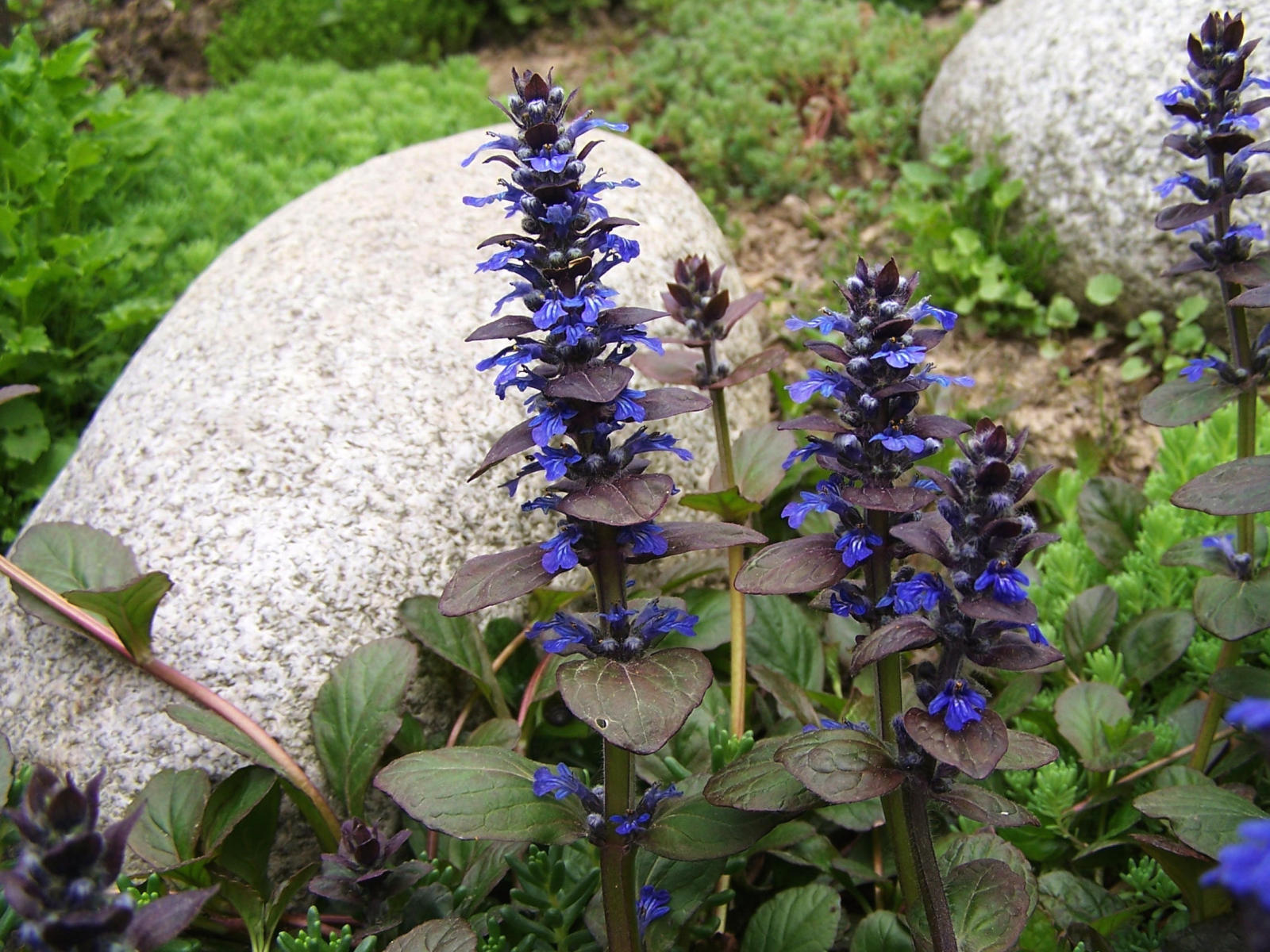

Botanical Name: Alchemilla mollis
Common Name: lady’s mantle
Family: Rosaceae
Distribution/Origin: Europe
Leaf: large, palmately lobed, cordate bases, finely pubescent, undulate margins
Bud: basal
Flower: floriferous raceme, green to yellow, blooms June-July
Fruit/Seed: achene, brown
Stem/Bark: fibrous like roots
Size: 1.5’ height, 2-3’ spread
Habit: dense, spreading
Form: mounded
Soil conditions: rocky or gravelly, average, well drained
Moisture: moist
Sun: full sun to partial shade
Exposure:
Landscape use: beds, perennial borders, mass plantings, cut flower or foliage, group or mass plantings
Notes: self seeds, cut back spent flowers, can become weedy


Botanical Name: Campanula persicifolia
Common Name: European bellflower, peach leaved bellflower
Family: Campanulaceae
Distribution/Origin: Europe
Leaf: simple, pinnate venation, lanceolate-linear-oblong to ovate, acuminate apices with attenuate bases, varying margins
Bud: basal, alternate, sessile
Flower: flowers borne on erect stems, blooms May-June
Fruit/Seed: capsule
Stem/Bark: green scape with vertical ridges, rhizomatous
Size: 2-5’ height, 1-2’ spread
Habit: upright
Form: oval-vertical
Soil conditions: well drained, average
Moisture: moderate
Sun: full sun, part shade or sun
Exposure:
Landscape use: groundcover, filler, perennial borders, summer interest
Notes: milky sap


Botanical Name: Centaurea montana
Common Name: cornflower, bachelor's button
Family: Asteraceae
Distribution/Origin:
Leaf: simple, pinnate venation, pubescent surfaces, green, elliptic to lanceolate, with acute apices and cuneate bases, entire margins
Bud: alternate
Flower: capitulum, ligulate corollas, blue to purple, blooms April-July
Fruit/Seed: brown achene
Stem/Bark: bright green stems
Size: 1-2’ height, 2-3’ spread
Habit: arching, spreading, upright
Form: oval-horizontal
Soil conditions: well drained, average
Moisture: moderate
Sun: full sun to part shade
Exposure:
Landscape use: attracts beneficials, bedding plant, perennial border, rock garden
Notes:


Botanical Name: Delphinium elatum
Common Name: perennial larkspur, mountain larkspur
Family: Ranunculaceae
Distribution/Origin: garden origin, mountainous worldwide except Australia
Leaf: deeply lobed, simple, palmate venation, orbicular with acute apices and cordate bases, serrated toothed margins
Bud: alternate, basal
Flower: simple, blue, upright spikes/floriferous raceme, bilaterally symmetrical, reblooms if pruned in fall
Fruit/Seed: aggregate fruit, follicle
Stem/Bark: tall erect stems
Size: 3-8’ height, 1-3’ spread
Habit: upright
Form: columnar
Soil conditions: fertile, well drained
Moisture: moderate
Sun: full sun
Exposure: protect from high winds
Landscape use: cottage gardens, perennial beds and borders, woodland margin
Notes: sometimes needs staking in windy exposures


Botanical Name: Dicentra (Lamprocapnos) spectabilis
Common Name: bleeding heart
Family: Papaveraceae
Distribution/Origin: Siberia, Japan, northern China, Korea
Leaf: compound, palmately lobed, pinnate venation, obovate-ovate with acute apices and cuneate bases, incised margins, fresh green
Bud: alternate
Flower: floriferous racemes, arching stems with pendulous blooms, heart shaped, nodding blooms with protruding white inner petals, blooms April-May
Fruit/Seed: capsule
Stem/Bark: tap roots, rhizomes
Size: 2-5’ height, 1-2’ spread
Habit: arching, upright
Form: oval, vertical vase
Soil conditions: well drained, humus rich
Moisture: moist
Sun: filtered shade, full sun only if site is kept moist
Exposure:
Landscape use: cut flower or foliage, mixed shrub border, perennial border, spring interest, waterside planting, woodland margin
Notes:


Botanical Name: Echinops bannaticus
Common Name: globe thistle
Family: Asteraceae
Distribution/Origin: southeastern Europe
Leaf: simple, glandular hairs (tomentose), elliptic to ovate, bluish hue, sharply lobed leaves, ligulate corolla, somewhat spiked tips, pectinate margins
Bud: opposite
Flower: umbel, globose ball, blooms July-August
Fruit/Seed: cypsela, (achene+calyx)
Stem/Bark: spines
Size: 2-4’ height, 1-2’ spread
Habit: stiffly upright
Form: oval-vertical
Soil conditions: rocky or gravelly, well drained
Moisture: dry, low
Sun: full sun
Exposure: tolerant of wide range of soils, including poor
Landscape use: accent plant, attracts beneficials, cut flower or foliage, dried flower or fruit, dryland, perennial border
Notes:


Botanical Name: Heuchera sanguinea
Common Name: coral bells, red coral bells
Family: Saxifragaceae
Distribution/Origin: SW United States
Leaf: simple, heavily veined, soft/flexible, pubescent surfaces, ovate with cordate bases
Bud: basal
Flower: floriferous panicle, campanulate, red, blooms June-Sept
Fruit/Seed: capsule
Stem/Bark: erect stems
Size: 1.5’ height, 1’ spread
Habit: dense
Form: mounded, round
Soil conditions: well drained, average
Moisture: moderate
Sun: full sun to partial shade
Exposure:
Landscape use: alpine, attracts birds, container planting, cut flower or foliage, ground cover, group or mass planting, perennial border, small garden space, summer interest
Notes:
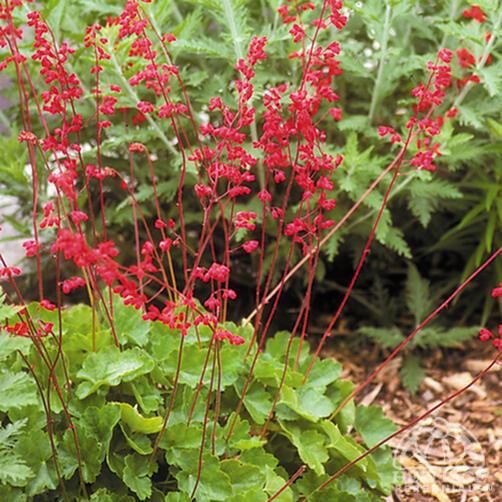

Botanical Name: Leucanthemum x superbum
Common Name: shasta daisy
Family: Asteraceae
Distribution/Origin: Europe
Leaf: lobed, lustrous surfaces, green, lanceolate-oblanceolate, rounded apices with oblique, serrated margins
Bud: alternate
Flower: capitulum, ligulate corolla, showy white, blooms June-Aug
Fruit/Seed: achene, aborted (in hybrids)
Stem/Bark: tall erect stems
Size: 2-4’ height, 2-3’ spread
Habit: arching, dense, open, spreading
Form: mounded, oval-vertical
Soil conditions: well drained, average
Moisture: moderate
Sun: full sun
Exposure:
Landscape use: perennial borders, container planting, cut flower or foliage, mass plantings, summer interest
Notes:


Botanical Name: Liatris spicata
Common Name: gayfeather
Family: Asteraceae
Distribution/Origin: central US
Leaf: spindly elliptic leaves, grass like, simple, linear with acute apices, cuneate bases and entire margins
Bud: basal
Flower: capitulum, ligulate corolla, white or violet, heads open from top, spike like florescent downwards, blooms Aug-Sept
Fruit/Seed: cypsela (achene+calyx)
Stem/Bark: rhizomatous, corms
Size: 2-4’ height, 1-2’ height
Habit: upright, erect
Form: clumping
Soil conditions: average, well drained
Moisture: medium
Sun: full sun
Exposure:
Landscape use: attracts beneficials, perennial border, cut flower or foliage
Notes:


Botanical Name: Monarda didyma
Common Name: bee balm
Family: Lamiaceae
Distribution/Origin: Canada, northeastern US
Leaf: simple, heavily veined, pinnate venation, soft flexible, distinct scent, glabrous pubescent surfaces, green with reddish veins, ovate with acute apices, cordate bases with serrated margins
Bud: opposite
Flower: floriferous, verticillaster, perfect, tubular, showy reds-pinks, reddish bracts, blooms July-Sept
Fruit/Seed: brown nut
Stem/Bark: rhizomes
Size: 3-4’ height, 1-2’ spread
Habit: arching, dense, spreading, upright
Form: clumping, oval-vertical
Soil conditions: average, well drained
Moisture: moist
Sun: full sun (only if soil is kept moist)
Exposure:
Landscape use: attracts beneficials, cut flower or foliage, dried flower or fruit, fall interest, fragrant garden, perennial borders and beds, tall background, waterside planting
Notes: susceptible to powdery mildew, can be sheared down, needs staking

Botanical Name: Paeonia lactiflora
Common Name: garden peony, common peony
Family: Paeoniaceae
Distribution/Origin: central/west Asia, (east Siberia, Mongolia, W&N China)
Leaf: compoundly lobed, pinnate venation, soft flexible, glabrous surfaces, biternate, odd pinnate, trippinate, dark green with light undersides, elliptic lanceolate, cuspidate apices, attenuate bases, entire incised, undulated margins, scant hairs beneath
Bud: alternate
Flower: big prolific blooms, multi petaled, floriferous, solitary, perfect, rotate/stellate corolla, multi colored blooms, fragrant, blooms May-June
Fruit/Seed: follicle, aggregate fruit
Stem/Bark: fleshy root tubers, rhizomes
Size: 1-3’ height, 2-5’ spread
Habit: upright
Form: vase
Soil conditions: humusy, rich, well drained
Moisture: moderate
Sun: full sun to partial shade
Exposure: sheltered from high winds
Landscape use: mixed shrub borders, cut flowers, fragrance garden, fall interest, group or mass planting, perennial border, specimen
Notes: coated with sugar that needs to be eaten by ants in order for buds to open, can need staking, top heavy

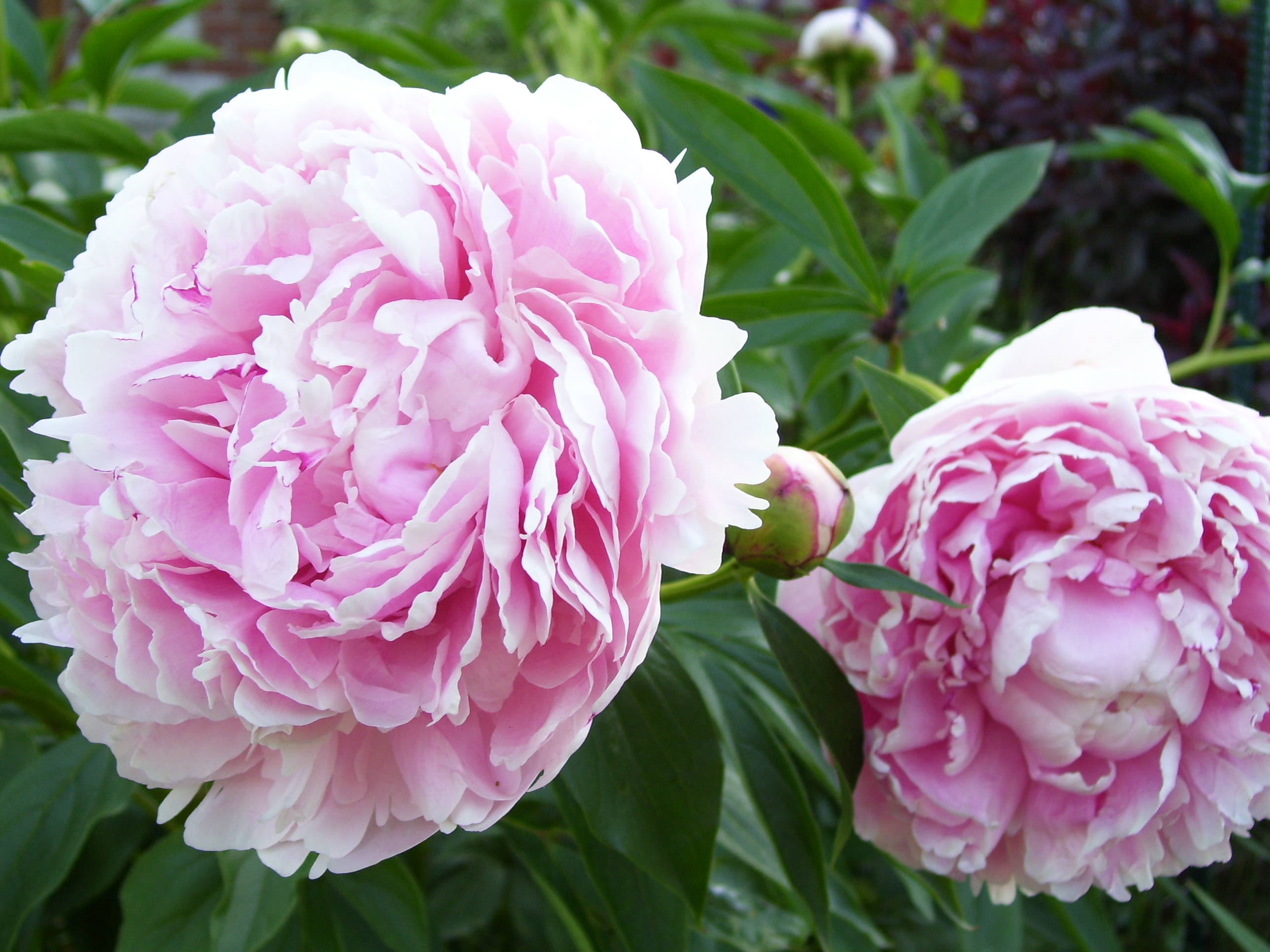
Botanical Name: Phlox subulata
Common Name: creeping phlox
Family: Polemoniaceae
Distribution/Origin: central and NE US
Leaf: simple, soft/flexible, pubescent surfaces, green, elliptic shape with ciliate margins
Bud: alternate
Flower: simple, cyme, 5 petaled, salverform corolla, multi colored depending on cultivar, fragrant, blooms May-June
Fruit/Seed: brown capsule
Stem/Bark: purple-red stems
Size: .5’ height, 2-3’ spread
Habit: low growing, dense, spreading
Form: mat forming, mat like
Soil conditions: rocky or gravelly, well drained
Moisture: dry to moderate
Sun: full sun to partial shade
Exposure:
Landscape use: groundcover, alpine garden, dryland, perennial border, rock garden, small garden space, spring interest
Notes:

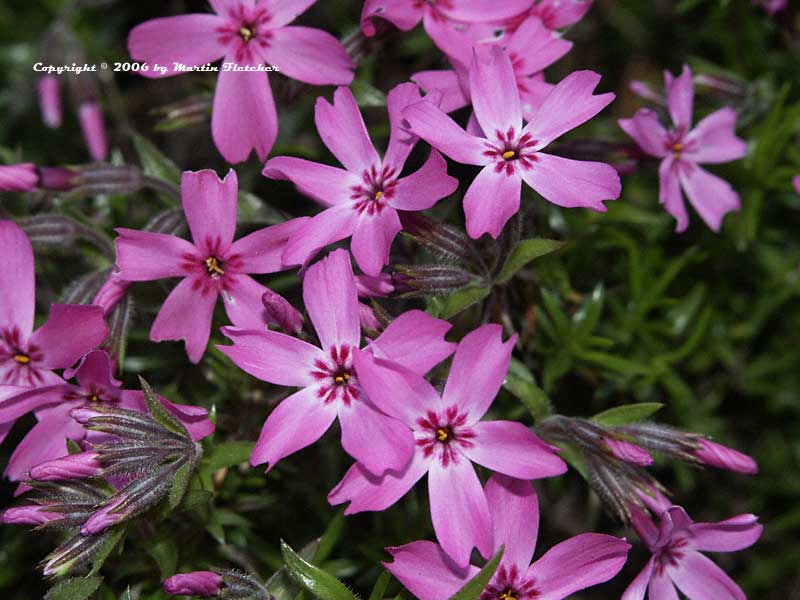
Botanical Name: Sedum spurium
Common Name: two-row stonecrop, caucasian stonecrop
Family: Crassulaceae
Distribution/Origin: Europe, Caucasus mountain region
Leaf: simple, succulent, glabrous surfaces, green or red variegated (cultivar dependant), obovate with rounded apices, cuneate, with crenate to dentate margins
Bud: opposite
Flower: floriferous, corymb like/cyme, perfect, 5 petals, colors vary on cultivar (white-red), blooms Aug-Sept
Fruit/Seed: follicle, aggregate fruit
Stem/Bark: adventitious roots, succulent stems, fibrous like roots
Size: up to .5’ height, 1-2’ spread
Habit: spreading, creeping
Form: groundcover, mat like
Soil conditions: rocky or gravelly, well drained
Moisture: dry to moderate
Sun: full sun, part sun to shade
Exposure:
Landscape use: groundcover, cracks of wall, rock garden, perennial borders, green roof technology, small garden space, summer interest
Notes:

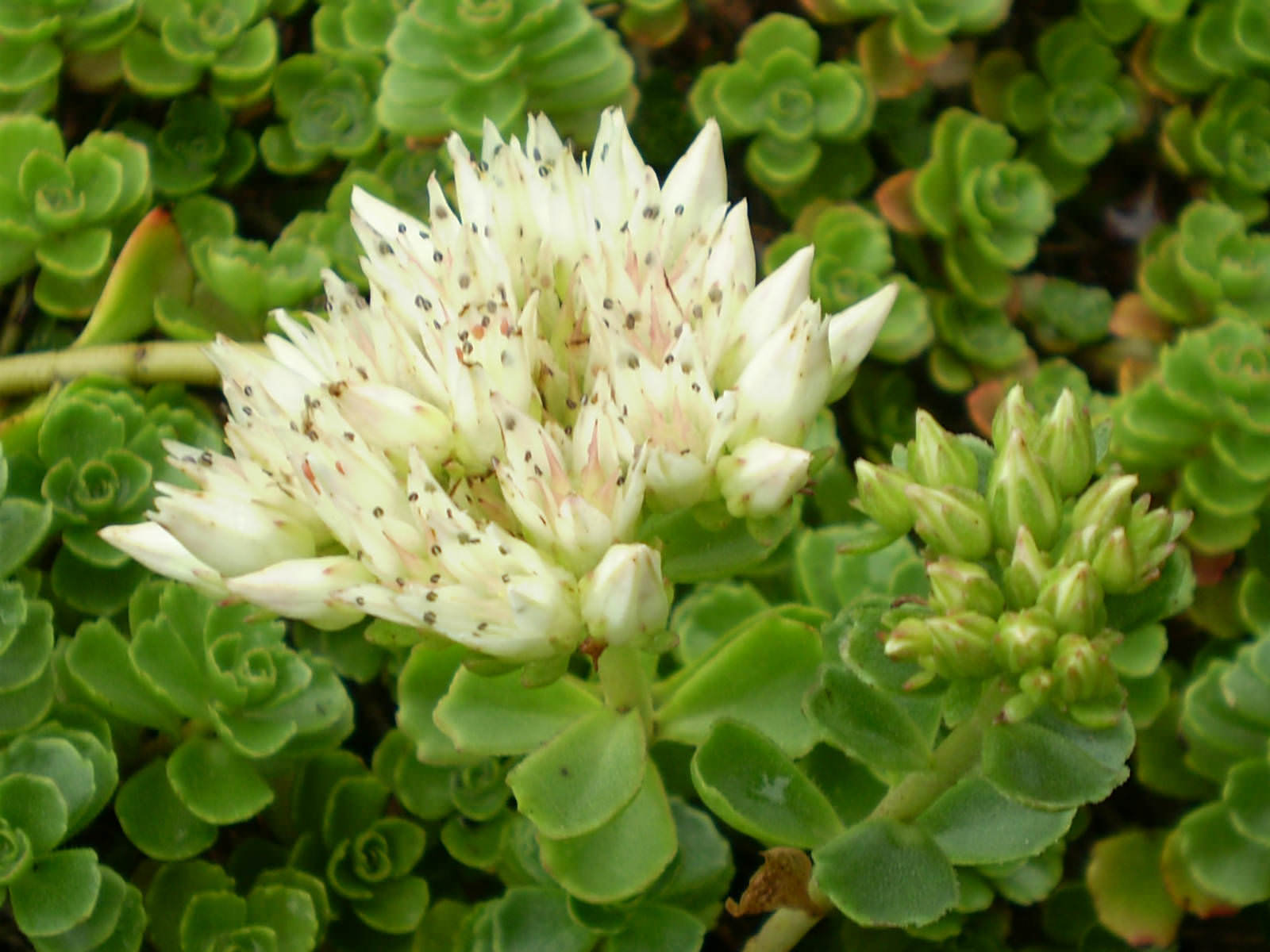
Botanical Name: Trollius europaeus
Common Name: globeflower
Family: Ranunculaceae
Distribution/Origin: Europe, North America, Caucasus
Leaf: lobed, simple, palmately compound, palmate venation, soft flexible, glabrous surfaces, green, orbicular with rounded apices, peltate bases, dentate/incised margins to serrate
Bud: basal
Flower: yellow cymes, blooms May-June
Fruit/Seed: follicle, aggregate fruit
Stem/Bark: long erect stems
Size: 1-2.5’ height, 1-2’ spread
Habit: upright
Form: irregular
Soil conditions: average, well drained
Moisture: moderate
Sun: full sun to partial shade
Exposure:
Landscape use: perennial borders and beds, cottage gardens
Notes: goes dormant in summer 
No comments:
Post a Comment